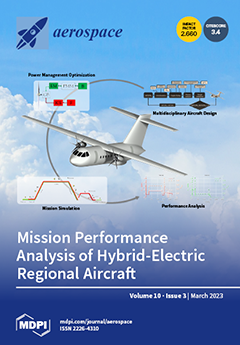To solve the problems associated with micron-sized aluminum (Al), including sintering, agglomeration, and slag deposition during the combustion of aluminized propellants, aluminum–lithium (Al-Li) alloy, prepared by introducing a small amount of Li (1.0 wt.%) into Al, was used in place of Al. Then,
[...] Read more.
To solve the problems associated with micron-sized aluminum (Al), including sintering, agglomeration, and slag deposition during the combustion of aluminized propellants, aluminum–lithium (Al-Li) alloy, prepared by introducing a small amount of Li (1.0 wt.%) into Al, was used in place of Al. Then, the ignition and combustion characteristics of single micron-sized Al-Li alloy particles were investigated in detail using a self-built experimental apparatus and multiple characterization methods. The ignition probability, ignition delay time, flame propagation rate, burn time, combustion temperature, flame radiation spectra, and microexplosion characteristics were obtained. The TG-DSC results demonstrated that, as compared to the counterpart Al, the Al-Li alloy had a lower ignition temperature. The emission lines of AlO revealed the gas-phase combustion of the Al-Li alloy, and thus the Al-Li alloy exhibited a mixed combustion mode, including surface combustion and gas-phase combustion. Moreover, during combustion, a microexplosion occurred, which increased the combustion rate and reduced the burn lifetime. The ambient pressure had a significant effect on the ignition and combustion characteristics of the Al-Li alloy, and the ignition delay time and burn time exponentially decreased as the ambient pressure enhanced. The combustion temperature of the Al-Li alloy at atmospheric pressure was slightly higher than those at elevated pressures. The Al-Li alloy burned in N
2, but no microexplosion was observed. Finally, the ignition and combustion mechanism of the Al-Li alloy in air was demonstrated by combining SEM, EDS, and XRD analyses of the material and residues. The results suggest that the addition of Li promoted the combustion performance of Al by changing the surface structure of the oxide film and the combustion mode.
Full article





